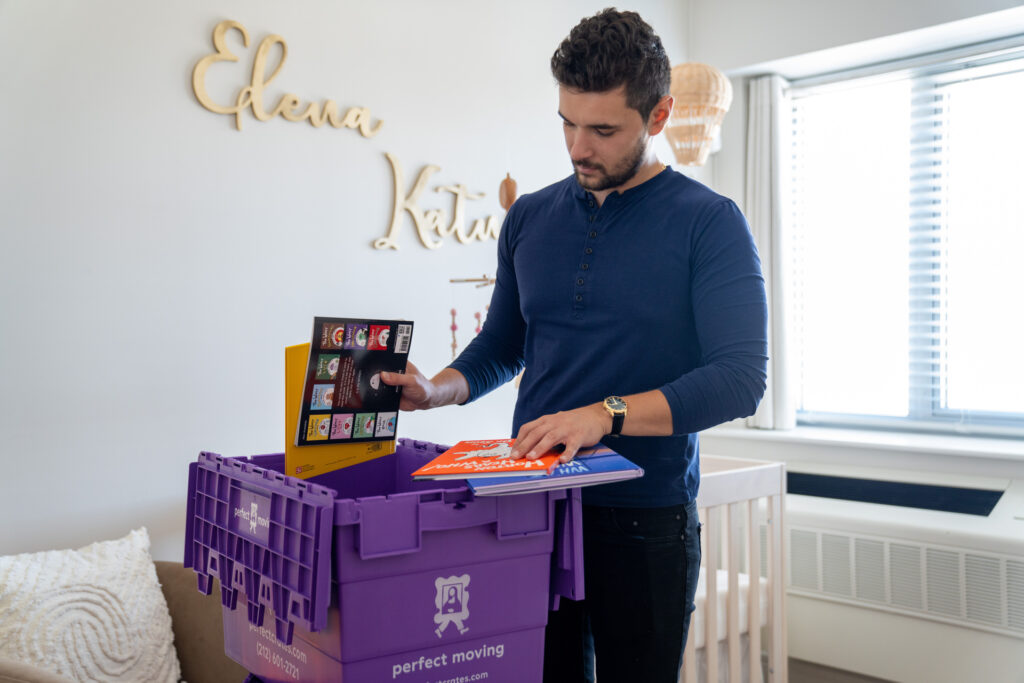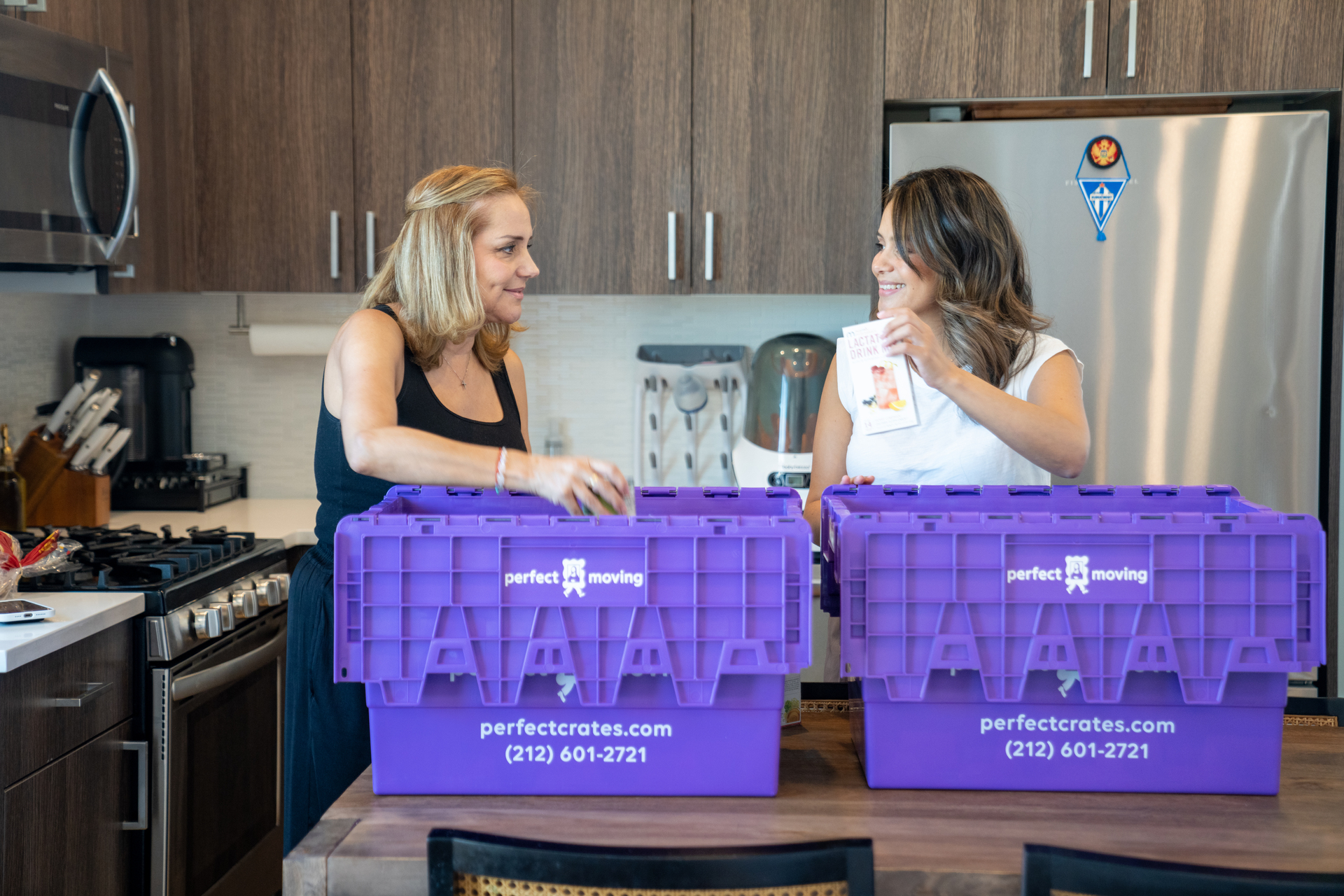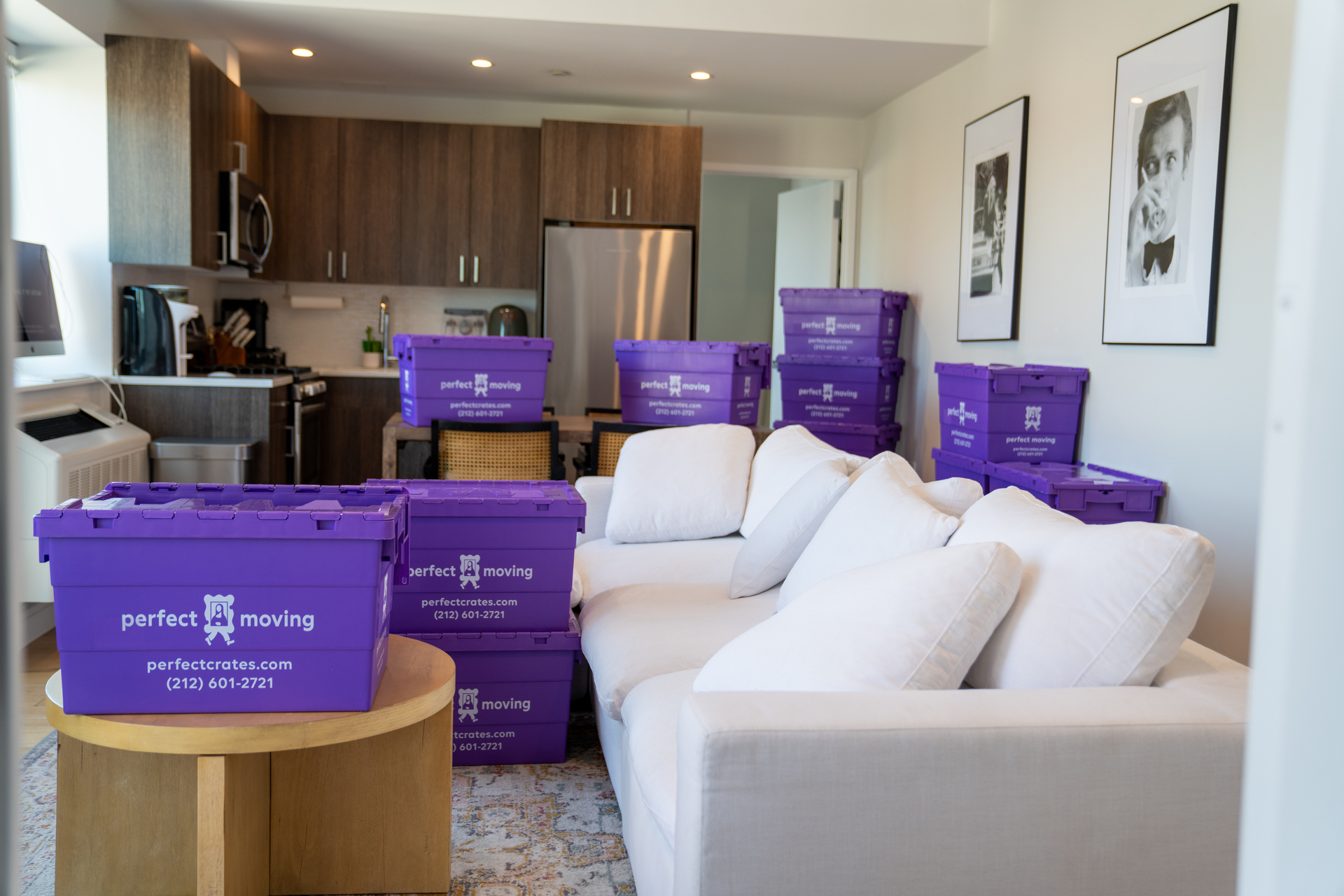Safe and Secure: Packing Fragile Items in Plastic Moving Boxes
Packing fragile items such as glassware, dishes, and other delicate objects for a move can be a stressful experience. Ensuring their protection during transport requires proper packing techniques and materials. Here are some expert tips to safely pack your fragile items in plastic moving boxes:
Fragile Items Packing Tips
Start by sorting your fragile items by size and type, and set aside any items that are chipped, cracked, or otherwise damaged. Discard or donate these items, as they may not survive the move.
Rent sturdy, high-quality plastic moving bins with secure lids to protect your fragile items from dust, moisture, and damage. Choose appropriately sized bins that can accommodate your items without overcrowding or allowing them to shift during transport.
Use packing paper, bubble wrap, or foam sheets to wrap each item individually, creating a protective layer to cushion against impact. Ensure that each item is fully wrapped, with no gaps or exposed areas.
Place heavier items at the bottom of the bin and gradually work your way up to lighter items. This arrangement will help distribute weight evenly and reduce the risk of damage.
Fill any gaps in the bin with crumpled packing paper, bubble wrap, or foam peanuts to provide additional cushioning and prevent movement during transit.
Label your plastic moving bins with clear and detailed descriptions of their contents, such as "Fragile Glassware" or "Delicate Dishes." This will make it easier to locate specific items during the unpacking process and help ensure that your belongings are handled with care.
By following these guidelines, you can pack your fragile items efficiently in plastic moving bins, ensuring their protection and organization during your move. Proper packing techniques will also contribute to a smoother transition to your new home, allowing you to enjoy your belongings more quickly.
Essential materials and tools needed for packing fragile items
Bubble wrap
This is one of the most important materials you will need when packing fragile items. It will help protect your items from bumps and shocks during transportation.
Packing paper
You can use packing paper to wrap your fragile items in order to provide an additional layer of protection.
Packing peanuts
Packing peanuts are great for filling in gaps in the box and preventing items from shifting during transportation.
Packing tape
Make sure to have plenty of packing tape on hand to secure your boxes and prevent them from opening during transport.
Scissors
You will need a good pair of scissors to cut the bubble wrap, packing paper, and packing tape.
Markers
Use markers to label your boxes with a "fragile" warning, so movers or anyone else handling the boxes knows to handle them with care.
Cardboard boxes
Choose sturdy cardboard boxes that are the right size for your items. You don't want boxes that are too big or too small, as they can lead to shifting during transport.
Styrofoam sheets
Styrofoam sheets can provide additional cushioning to your fragile items and help protect them from damage.
Protective sleeves
Consider using protective sleeves for your delicate items, such as glassware, to keep them from getting scratched or damaged.
Gloves
If you have delicate or antique items that require extra care, consider wearing gloves when handling them to prevent fingerprints or accidental damage.
Common mistakes people make when packing fragile items
Overpacking a bin or box
Overpacking a bin or box can lead to items being crushed or damaged during transit. When packing fragile items, it's important to leave enough space around each item so that they don't touch each other or the sides of the box. Use a box that is the appropriate size for the items being packed, and don't try to fit too many items in one box.
Using newspaper instead of proper packing materials
While newspaper may seem like a good option for packing fragile items, it can actually cause damage. Newspaper can leave ink stains on delicate items and doesn't provide enough cushioning to protect against impact. Instead, use proper packing materials such as bubble wrap, packing peanuts, or foam inserts to protect your fragile items.
Not labeling boxes as "fragile"
Make sure to label any boxes that contain fragile items as "fragile" or "handle with care." This will alert anyone handling the box to take extra caution when transporting it.
Not securing items properly
When packing fragile items, it's important to ensure that they are secured in place and won't shift during transit. Use packing tape to secure items in place and add additional cushioning as necessary.
Not using enough packing materials
When it comes to packing fragile items, it's better to use too much packing material than not enough. Make sure to use enough cushioning material to protect your items from any impact or vibrations during transit.
Instructions on how to properly pack fragile items
Wine glasses
Wrap each wine glass in a layer of bubble wrap. Make sure the bubbles are facing inward towards the glass. Use packing tape to secure the wrap in place. Place the wrapped glasses upright in a sturdy cardboard box. Fill the spaces between the glasses with crumpled paper or packing peanuts to prevent them from moving during transit.
Champagne flutes
Similar to wine glasses, wrap each champagne flute in a layer of bubble wrap, ensuring that the bubbles are facing the glass. Use packing tape to secure the wrap in place. Place the wrapped flutes upright in a cardboard box. Fill any spaces with crumpled paper or packing peanuts to keep them from moving during transit.
Porcelain figurines
Wrap each figurine individually in bubble wrap. Make sure to cover all delicate parts and corners. Secure the bubble wrap with packing tape. Place each figurine in a small box, using crumpled paper to cushion any empty spaces. Then, put the small boxes inside a larger box and fill the remaining spaces with more crumpled paper to prevent movement during transit.
Crystal vases and bowls
Wrap each crystal vase or bowl in a layer of bubble wrap, making sure to cover any delicate parts. Use packing tape to secure the wrap in place. Place the wrapped items inside a sturdy cardboard box, making sure to cushion them with crumpled paper or packing peanuts.
Antique glassware
Wrap each antique glass item in a layer of bubble wrap, ensuring that the bubbles are facing the glass. Secure the bubble wrap with packing tape. Place the wrapped items inside a sturdy cardboard box, cushioning them with crumpled paper or packing peanuts.
Picture frames with glass
Remove the glass from the picture frame if possible. Wrap the glass in a layer of bubble wrap, securing it with packing tape. Place the wrapped glass inside a sturdy cardboard box, cushioning it with crumpled paper or packing peanuts. For the frame itself, wrap it in a layer of bubble wrap, securing it with packing tape, and then place it inside another box with more crumpled paper or packing peanuts to prevent movement during transit.
Mirrors
For larger mirrors, it's best to have them professionally packed. For smaller mirrors, wrap them in a layer of bubble wrap, securing it with packing tape. Place the wrapped mirror inside a sturdy cardboard box, cushioning it with crumpled paper or packing peanuts.
Ceramic plates and bowls
Wrap each ceramic plate or bowl in a layer of bubble wrap, making sure to cover all delicate parts. Use packing tape to secure the wrap in place. Place the wrapped items inside a sturdy cardboard box, cushioning them with crumpled paper or packing peanuts.
Glass lamps and light fixtures
Remove the light bulbs and shades from the lamp or fixture. Wrap each part separately in a layer of bubble wrap, securing it with packing tape. Place the wrapped items inside a sturdy cardboard box, cushioning them with crumpled paper or packing peanuts.
Delicate sculptures made of glass or porcelain
Wrap each sculpture in a layer of bubble wrap, making sure to cover all delicate parts. Use packing tape to secure the wrap in place. Place each wrapped sculpture in a small box, cushioning any empty spaces with crumpled paper. Then, put the small boxes inside a larger box and fill the remaining spaces with more crumpled paper or packing peanuts to prevent movement during transit.
Handling fragile items during the move
Pack carefully
Use plenty of bubble wrap, packing paper, and other cushioning materials to protect fragile items. Make sure they are packed tightly so they don't move around during transit.
Label clearly
Clearly label all boxes containing fragile items, and mark them with arrows pointing up to indicate which end should be facing up.
Load last
When loading the moving truck, make sure to load fragile items last. This way, they will be the first items unloaded and can be placed in a safe location in the new home.
Use straps and tie-downs
Use straps and tie-downs to secure fragile items to the wall of the truck. This will help prevent them from moving around during transit.
Use special boxes
For particularly fragile items such as artwork or mirrors, consider using special boxes designed specifically for these items. These boxes provide additional cushioning and protection.
Hire professionals
If you have particularly fragile or valuable items, consider hiring professional movers. They will have experience and expertise in handling fragile items and will be able to provide additional protection during transit.




